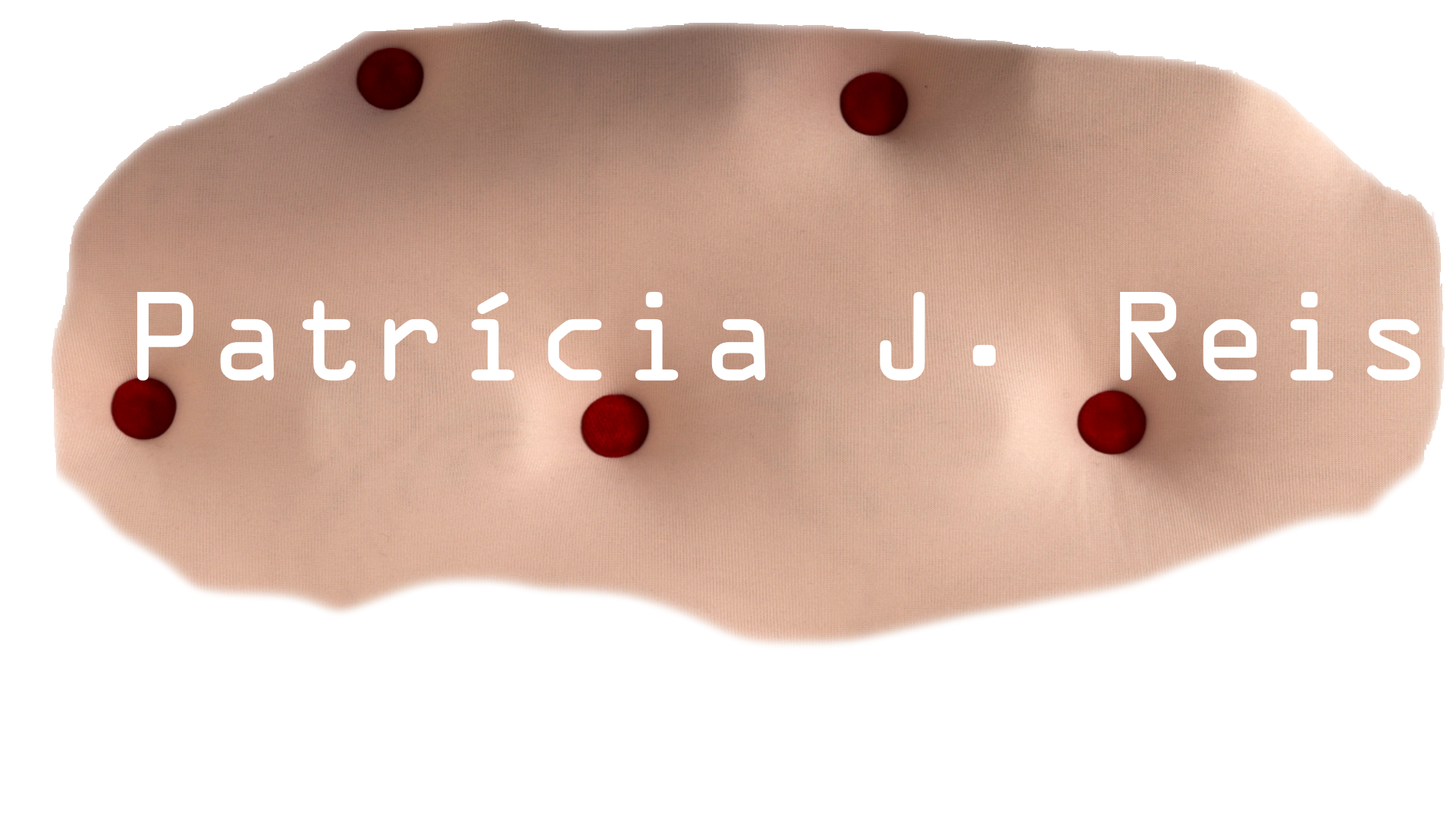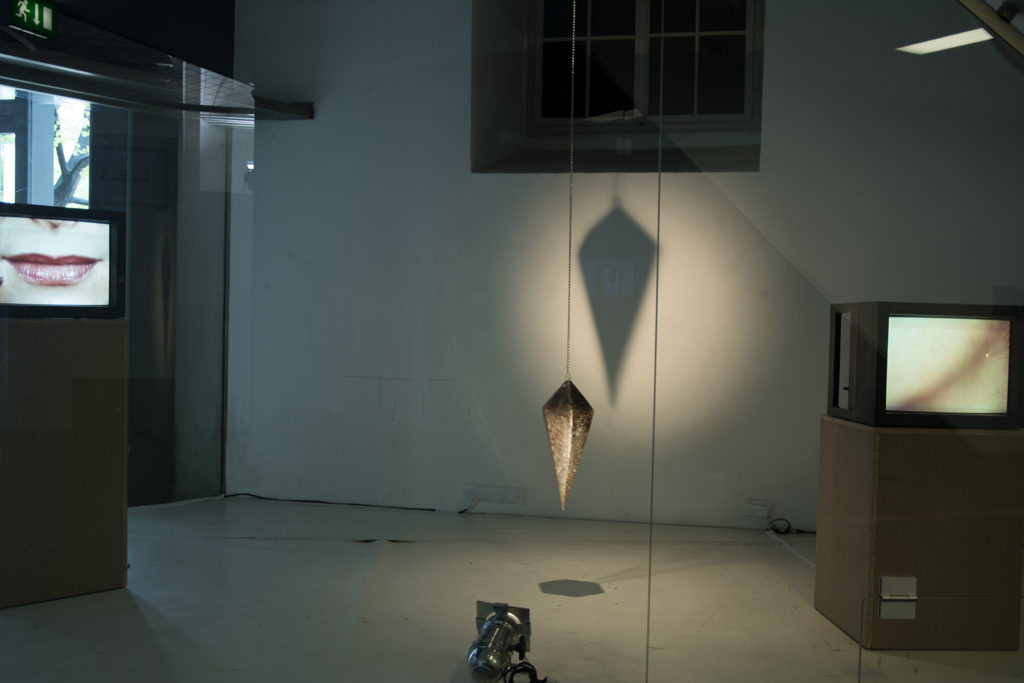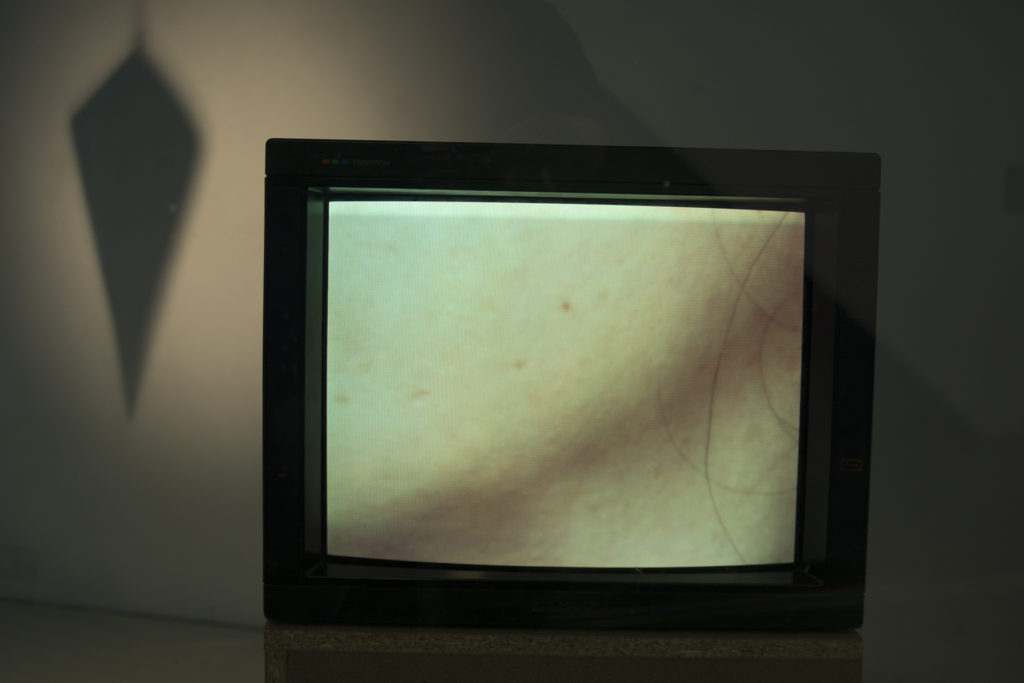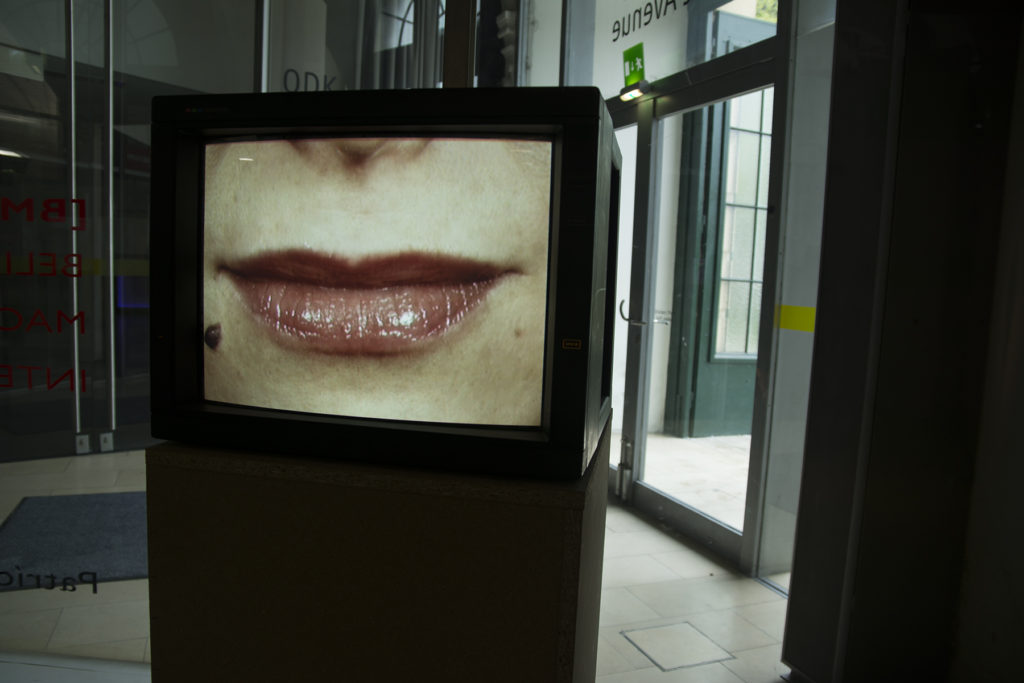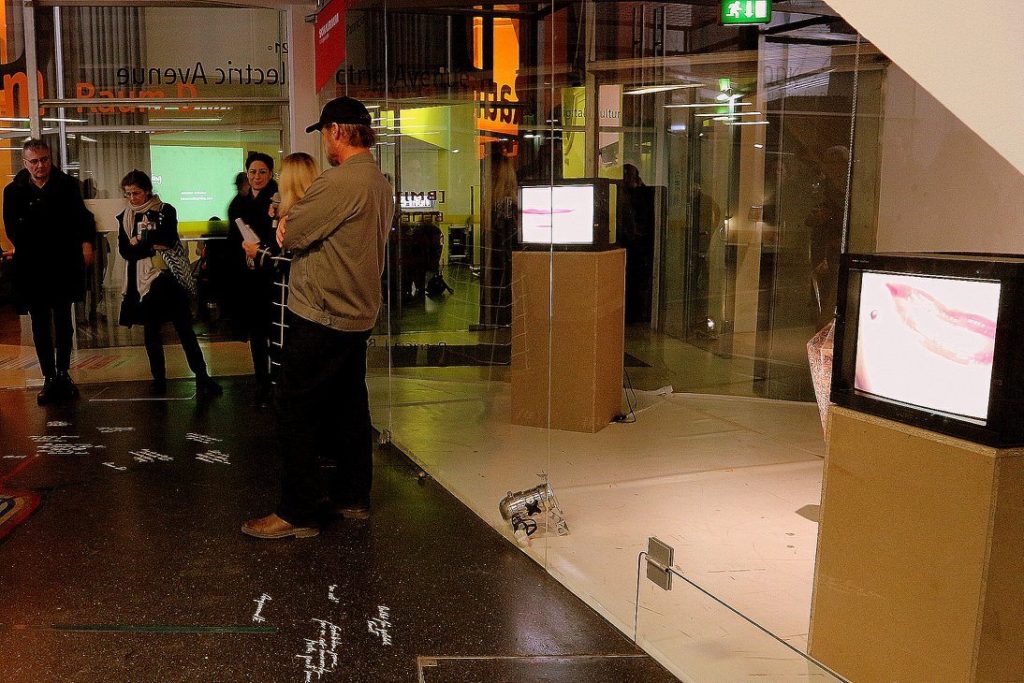[BMI] BELIEVER. MACHINE. INTERFACE. 2017,
title
[B.M.I.] BELIEVER. MACHINE. INTERFACE.
year
2017
dimensions
Variable
media
Dual-channel audiovisual installation composed by closed-circuit mechanical and computer system, pendulum (30x50cm).
We have learned to believe in machines! We enjoy believing in machines! The closed BMI [BELIEVER. MACHINE. INTERFACE] investigates fictional technomancy by questioning the boundaries between science, religion, and magic from the point of view of the user and/or believer. Referring to divination techniques from paganism, cabalism, and spiritual beliefs, the closed-circuit installation proposes a mechanism capable of triggering and translating the behavior of a mystic object. The object, a 50cm-high customized pendulum made of resign, metal shavings, and crystals, is suspended in-between two monitors that show a close-up of the artist’s mouth. In one of the videos the artist asks questions to the pendulum about the future. Each question triggers an automatic random motion in the pendulum, which is then tracked by motion sensors that communicate its coordinates to the computer system. According to the type of motion performed by the pendulum (clockwise, counter-clockwise, or still), a specific video is triggered in which the artist shakes her head by communicating “no,” “yes,” or “I don’t know.” In this way, the digital program is executing the task of decoding the behavior of the object into a certain answer. The human body, the subconscious, and the mind of the believer are replaced by the automatic system of the device. The machine becomes an interface between the believer and a utopian future.
Investigating the fragile entangled structures between science, technology, and other beliefs, BMI [takes an intersectional approach to analyzing and testing belief systems in contemporary neo-liberalist society: fixated on hi-tech consumerism, though overlooking the complexity of the program behind the materiality of the so-called “black box.” The more its functionality advances toward complexity, the easier the interface appears to the user. This dualism between the amounts of information one can retrieve (through the access and use of such machines), versus the inability to understand how the system really works, introduces an interesting fragility when it comes to trust and belief in the human–machine relationship.
BMI seeks to reframe our relationship with technology in the realm of fictional speculation by artistically proposing a machine-object that can predict a political future. The research is inspired by future developments on AI and AE, and by the technomagic imaginary from the past, in order to construct systems that allow us to position ourselves toward a desired and intimate future. BMI implements a playful methodology by operating with automatisms, randomness, predictability, and faith as instruments of technology and, with that, exploring a space-interface in-between in which fiction can be believed.
EXHIBITIONS
Venue: Schauraum di’Angewandte Museums Quartier, Vienna, Austria.
24.03 – 19.05.2017
Curator: Ruth Schnell and Tommy Schneider
PRESS
CREDITS
Development, concept and production: Patrícia J. Reis
Programming: Patrícia J. Reis & Daniel Schatzmayr
Hardware: Patrícia J. Reis
Video:Patrícia J. Reis
Many thanks to Anna Watzinger, Bina Simonic, Daniel Schatzmayr, Fernando Mesquita, Maria Trabulo, Paulina Semkowicz, Cornelia Auinger, and Ruth Schnell.

